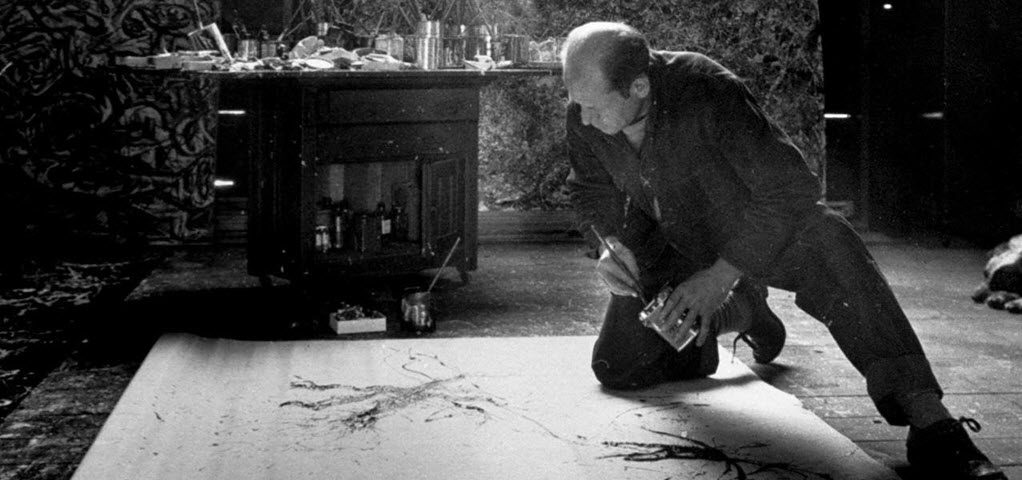Jackson Pollock, a post-war world art innovator

Happy World Paper Day
November 9, 2018
Print, Digital or Both?
November 15, 2018
It doesn’t make much difference how the paint is put on as long as something has been said. Technique is just a means of arriving at a statement.
Jackson Pollock
Jackson Pollock is known for his leading role in the abstract art movement. His novel use of paint on canvas changed the post-war art world.
Pollock was born in Cody, Wyoming on January 28, 1912, but spent most of his early life in Arizona and California, where he was influenced by the Native American cultures he saw while on surveying trips with his father.
In 1930, he followed his older brother Charles, also an aspiring artist, to New York where they studied under Thomas Hart Benton at the Arts Students League.
As well as Benton’s rhythmic use of paint, Pollock’s chief influences at this time were the Surrealists and the South American muralists. It was while in New York that Pollock was introduced to liquid paint by Mexican muralist David Alfaro Siqueiros during an experimental workshop in 1936.
World War II
Pollock was already struggling with depression and alcoholism and this precluded him from serving on the front line in World War II. Instead, he spent the war working for the WPA Federal Art Project. In 1943, he signed a gallery contract with influential collector Peggy Guggenheim and was commissioned to create the huge 8’ by 20’ “Mural” for her new townhouse.
This was a turning point for the artist and his most famous paintings were completed in the period after this, between 1947 and 1950. In 1946, Pollock attended an exhibition at Guggenheim’s gallery which included work by Ukrainian American artist Janet Sobel which would have a direct influence on his famous “drip painting” technique, according to art critic Clement Greenberg who attended the show with Pollock.
A year earlier, Pollock had married fellow artist Lee Krasner. The two had moved out of the city to a house in the Springs area of East Hampton on the south shore of Long Island. At this time, the Hamptons were not the chi-chi summer residences they are today; the area had more of a Greenwich Village feel, home to artists attracted by the light and relaxed vibe.
Pollock converted the barn into a studio and started experimenting with paint and canvases. It was here he pinned his canvasses to the floor for the first time, noting the process enabled him to “literally be in the painting”.
Pollock battled against the expropriation of the avant-garde; moving away from naming his paintings to merely numbering them. Krasner later explained, “Numbers are neutral. They make people look at the picture for what it is – pure painting.”
A darker phase
By 1951, the artist produced a series of darker paintings, known as his “black pourings”. Despite securing a show at Betty Parsons’ gallery in New York, he failed to sell a single canvas. Still battling his alcohol addiction, he returned to a more colorful style, reintroducing more figurative elements into his work.
In 1956, at the age of forty-four, driving while under the influence of alcohol, Pollock took a curve in the road not far from his home too fast – cartwheeling his convertible into the trees, killing himself and a passenger, Edith Metzger, and seriously injuring his twenty-two-year-old mistress, Ruth Kligman.
Following his death, Krasner worked to protect Pollock’s extraordinary legacy: his troubled persona had brought attention to a broader group of Abstract Impressionists, including de Kooning and Rothko.
He personally produced one of the most original bodies of work of the twentieth century; powerfully expressed a new post-war aesthetic; influenced not only American art but art movements and creative life around the world.
“New needs need new techniques. And the modern artists have found new ways and new means of making their statements… the modern painter cannot express this age, the airplane, the atom bomb, the radio, in the old forms of the Renaissance or of any other past culture.”
– Jackson Pollock



